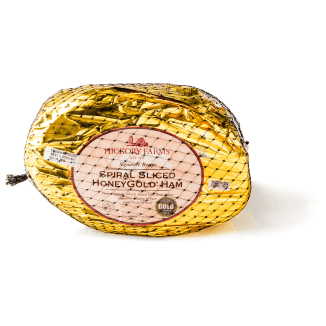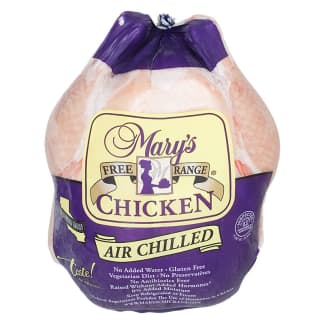Why do so many people serve ham for the holidays? A better question might be, why do people serve anything else? A salty-sweet spiral-sliced ham is precooked (just heat, glaze if you like, and serve), sliced for easy carving, and feeds a crowd. These hams are big, easy, and delicious. But with so many products on the market, which one should you buy?
To answer this, we selected seven widely available varieties of bone-in spiral-sliced ham (a mix of shank-end and butt-end cuts; we tasted whichever was easier to find) and asked 21 editors and cooks to taste each one. We began by tasting slices of plain, oven-heated ham; we moved on to ham sandwiches stacked with never-heated, refrigerator-chilled slices, using a different ham from each manufacturer for each tasting.
None of the hams were awful, but some were definitely better than others. The flavors of four of the seven products were a little out of whack, with a single flavor—smokiness, saltiness, or sweetness—overwhelming the others. The lower-ranked hams also had textural issues, with the meat tending to be dry, chewy, or spongy. Conversely, three hams impressed our tasters with juicy, tender textures and smoky, salty, and sweet notes that were pronounced but never overly dominant. The key was balance: The best hams had it, but it was in short supply in the lower-ranked contenders.
What gives some hams better texture and balance of flavors than others? The manufacturers we spoke with refused to divulge their processing methods, so we turned to industry experts for answers. The first thing these experts told us was that the flavor of a ham is primarily the result of processing (and not of the pig’s breed or diet), which explains why manufacturers didn’t want to share their secrets. We learned that all of these hams are wet-cured; the curing turns the meat the classic pink color, removes water (and thus concentrates flavor and texture), and seasons the ham. Spiral-sliced hams are typically wet-cured by immersion in (and/or injection with) a brine made with water, curing salts, and some form of sweetener. Brine recipes vary and obviously have an effect on the texture and harmony of flavors (or lack thereof) in the finished product.

To get the brine to permeate, the hams are “massaged” in a mechanical tumbler, a contraption resembling an industrial-scale dryer where, as the name suggests, hams roll and tumble for anywhere from 2 to 24 hours. Not only does this help distribute the brine throughout the meat but it also batters the hams against the tumbler’s walls, tenderizing the meat by physical force. The constant pressure applied during tumbling also forces water out. So the length and force of tumbling is another carefully controlled variable that contributes to the success of the finished product.
After brining, hams are cooked to a temperature between 155 and 170 degrees and then smoked, usually with hickory wood. Methods and timing vary here, too, according to experts. Some manufacturers smoke their hams for as few as 2 hours, while others approach 24 hours. Add cooking and smoking to the factors that can make or break a ham.
In the end, we thought that all the hams were acceptable, but we did find three hams that were superior. With so many variables in the production process, it was clear that these three hams came from manufacturers with very carefully calibrated processes. Our winner, Johnston County Spiral-Sliced Ham, was tender and juicy, with the perfect balance of smoke, salt, sweetness, and fat. These hams are sold in stores and online as half hams, roughly 7.5 pounds each.
After this story was published, the makers of our favorite country ham, Johnston County Hams, ceased operations. Our new winner is the Burgers' Smokehouse Spiral-Sliced City Ham.
- Taste plain oven-heated slices of ham
- Taste chilled ham on potato rolls with mayonnaise
- Prominent porky flavor
- Balanced smoky, salty, and sweet notes
- Tender, juicy, meaty texture











